
Hi Gang…
Look at how the CRV was introduced to the public in 1965 on the inside of their fabulous press kit / investor brochure:
CRV: Cycolac Research Vehicle
“Rarely have potentialities of a material been put to more extensive application. The CRV (Cycolac Research Vehicle) was conceived as a unique automobile, preserving the integrity of material and functional relationships through the use of a versatile engineering thermoplastic – Marbon’s Cycolac ABS.
Designed by William M. Schmidt Associates as a two piece “clamshell,” the CRV utilizes the horizontal body juncture as a structural section for bumpers and body rigidity, as well as a strong appearance element.
For the first time, a production automobile has been conceived to include exterior body, interior shell, bucket seats, arm rests, console, instrument panel, door jam, and glazing ledge all in one integrally formed part. The lower body includes exterior body shell, complete underpan, wheel openings and inner wheel wells.
In addition, the Cycolac ABS was employed for chromed trim parts, including the bumpers. Not since the early days of the auto industry has a material been so adaptable to the capabilities of the designer and auto builder.”
Let’s take a look at the brochure – all 16 pages. Most of the illustrations are a work of art – so be prepared to enjoy
CRV Brochure: 1965
Summary:
Today’s story is a result of the interest of Jim Simpson of Simpson Designs (http://www.simpsondesign.net/). Jim recently expressed an interest in learning more about this beautifully designed car, and I have to warn him as follows… Jim, we have alot more history and “print pieces” to share with you about the CRV so get ready to have your breath taken away…
Appreciation is also extended to Raffi Minasian who first made this brochure available for scanning and later archival purposes here at Forgotten Fiberglass. Thanks Raffi! And for those of you who wish to learn more about this very special “plastic” and later “fiberglass” sports car, click here to visit Nick Whitlow’s, CRV historian’s website – the best source available for a full history on these cars.
Hope you enjoyed the story, and until next time…
Glass on gang…
Geoff

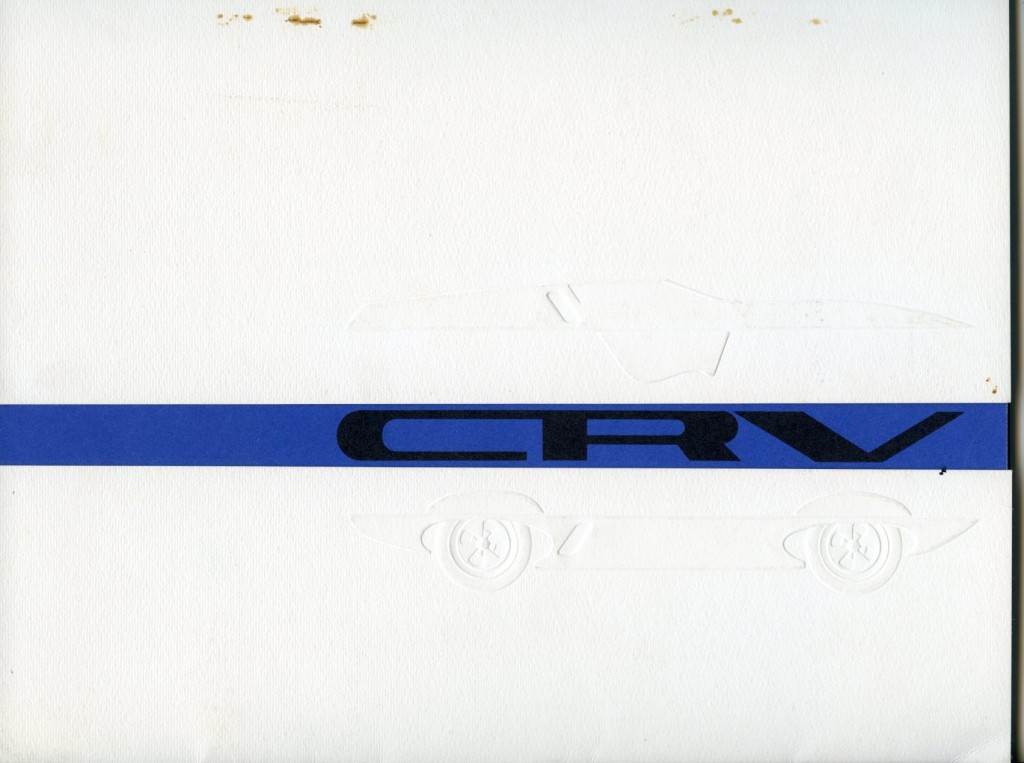
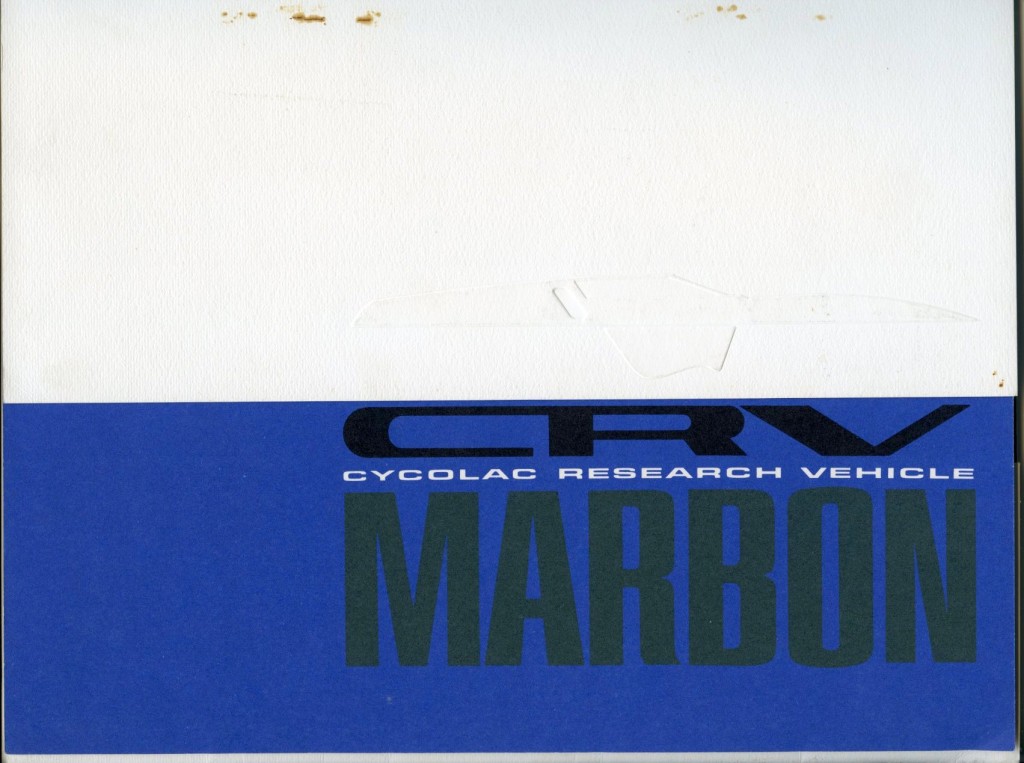
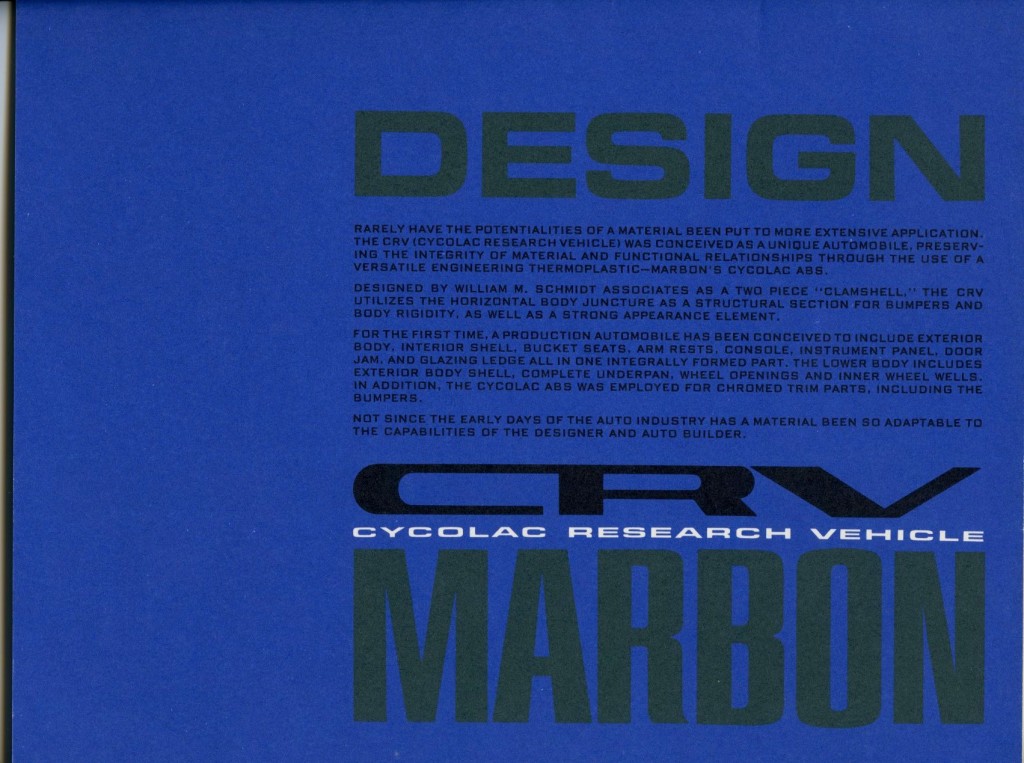
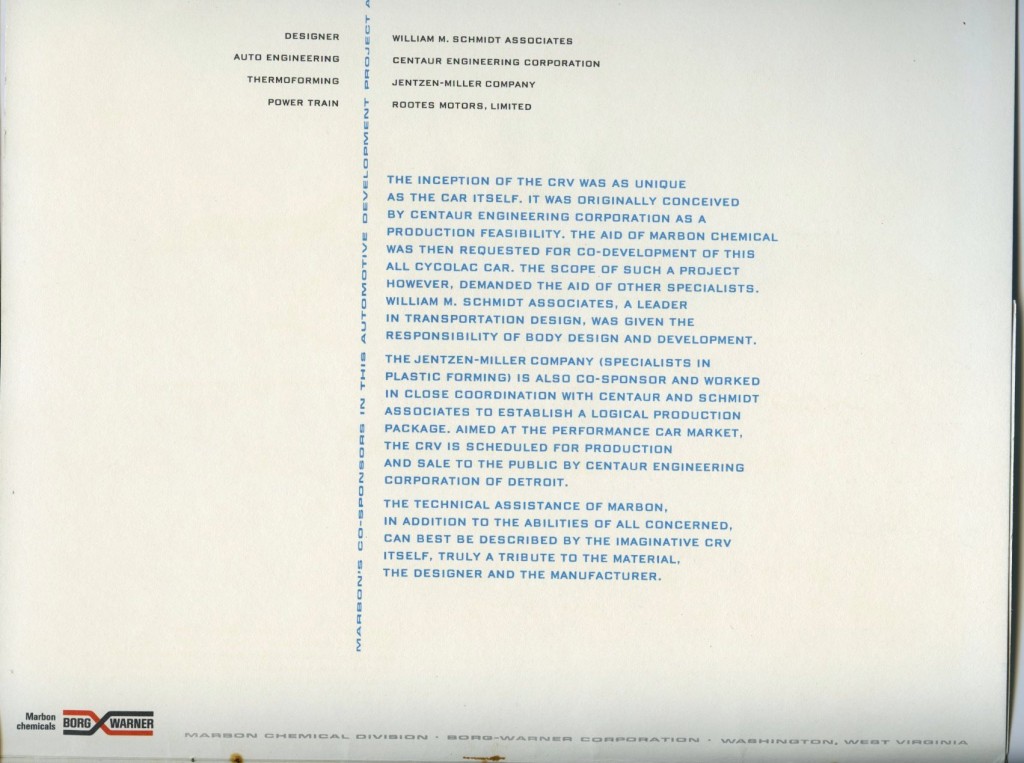

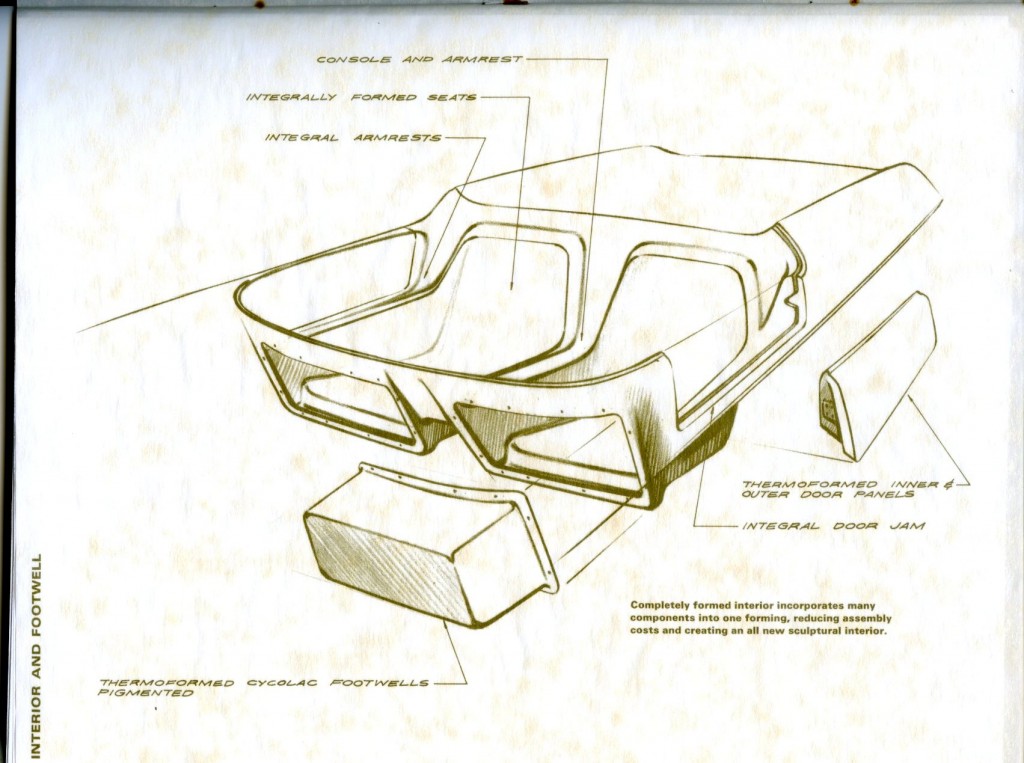
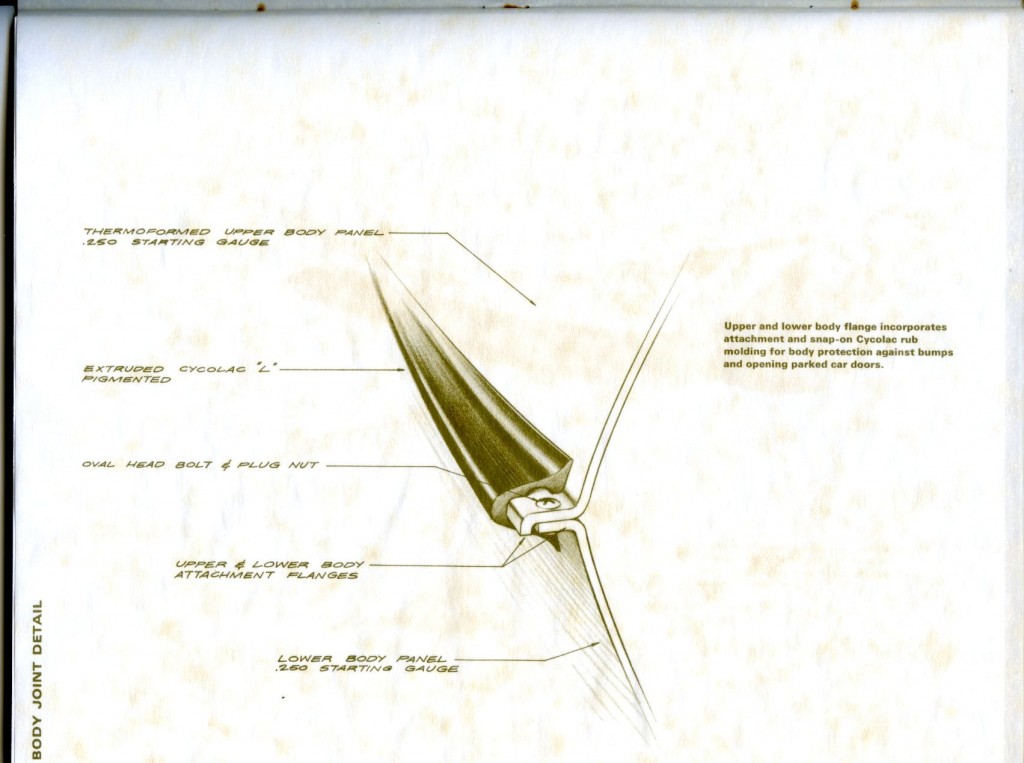

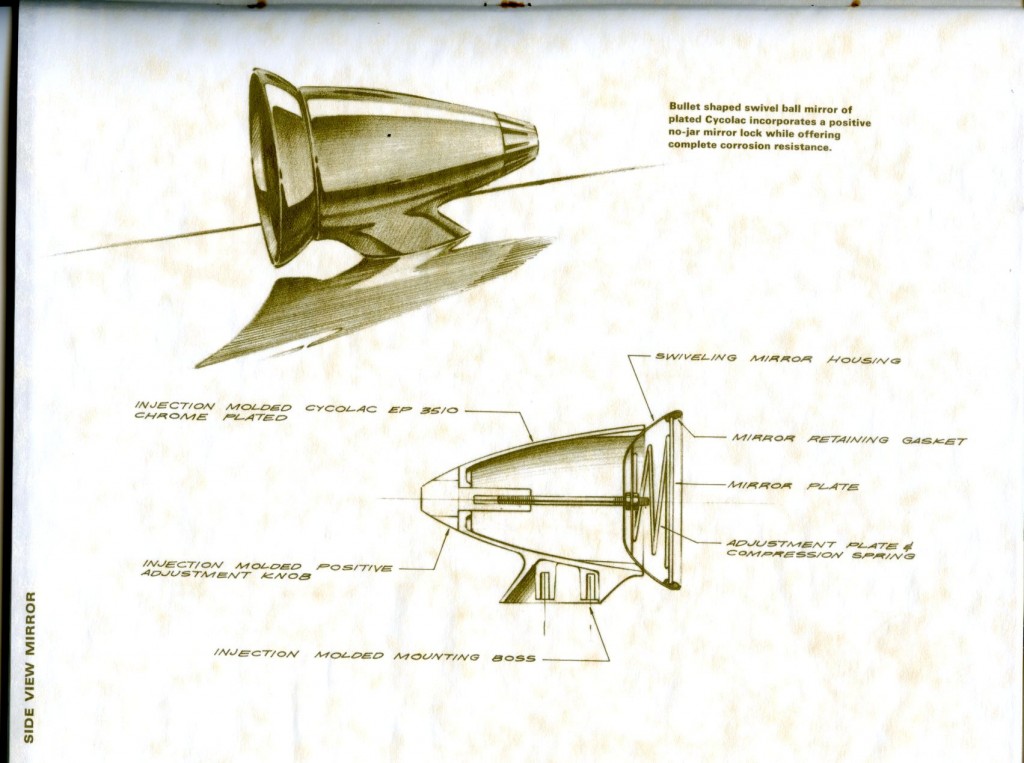
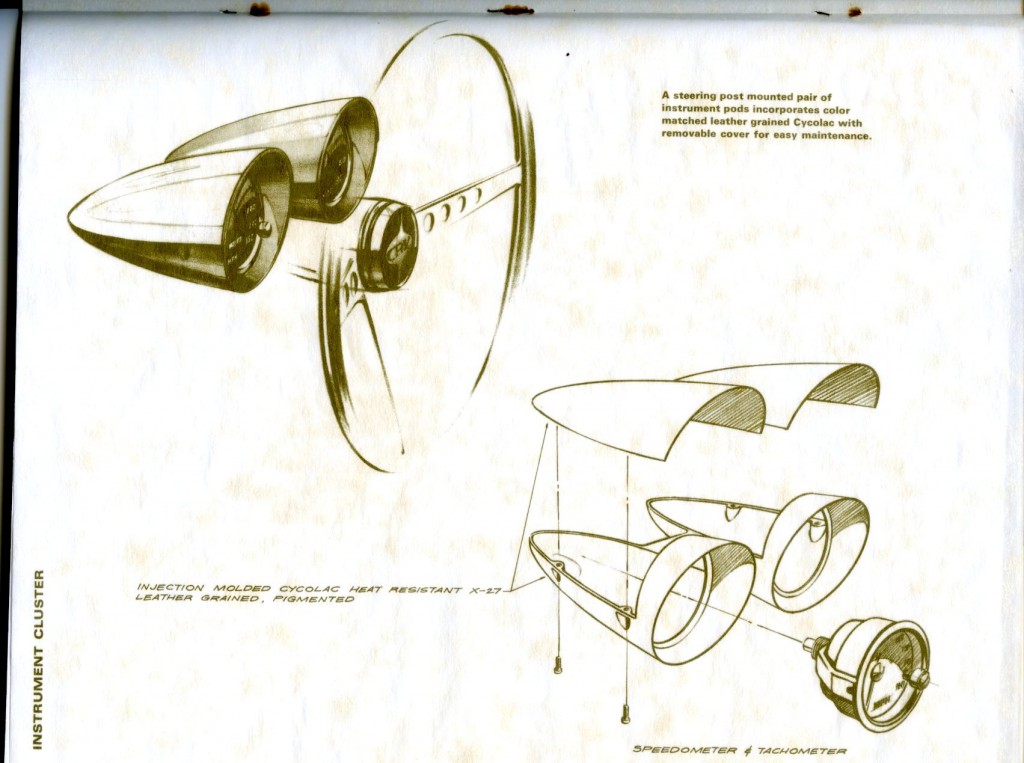
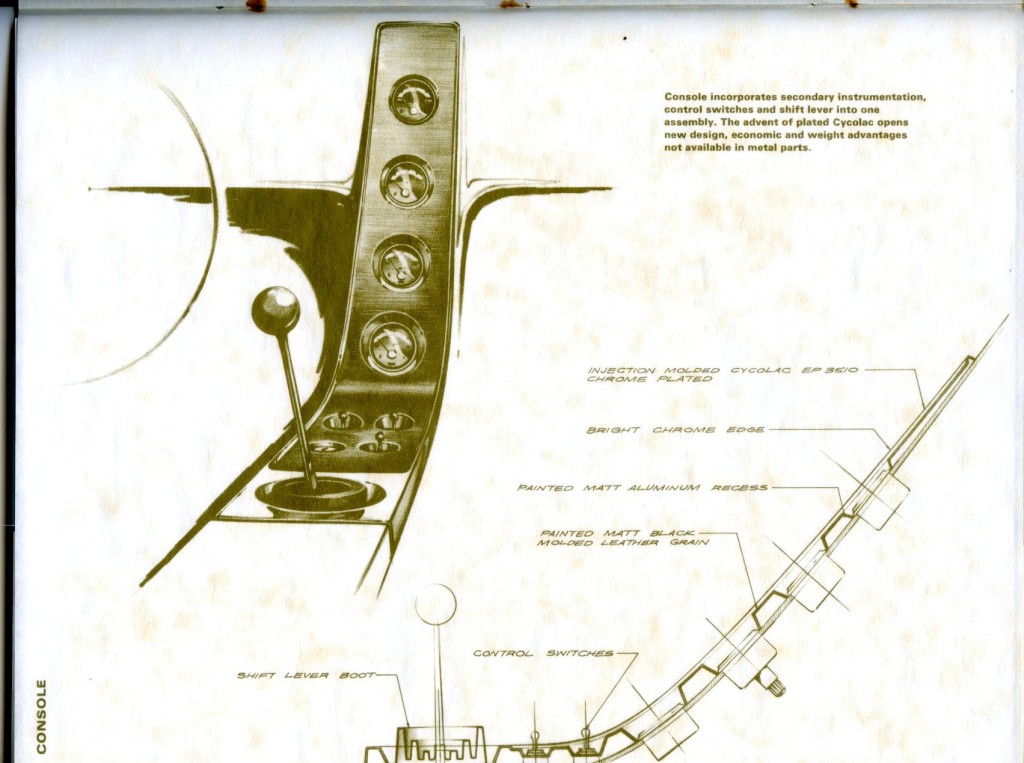
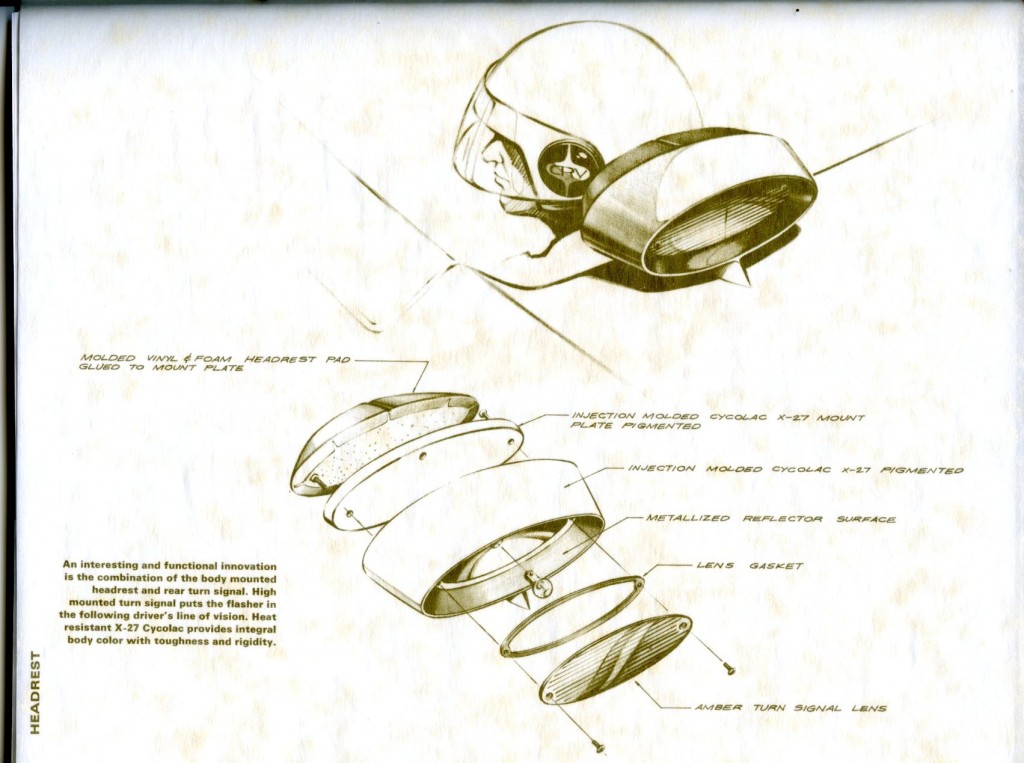
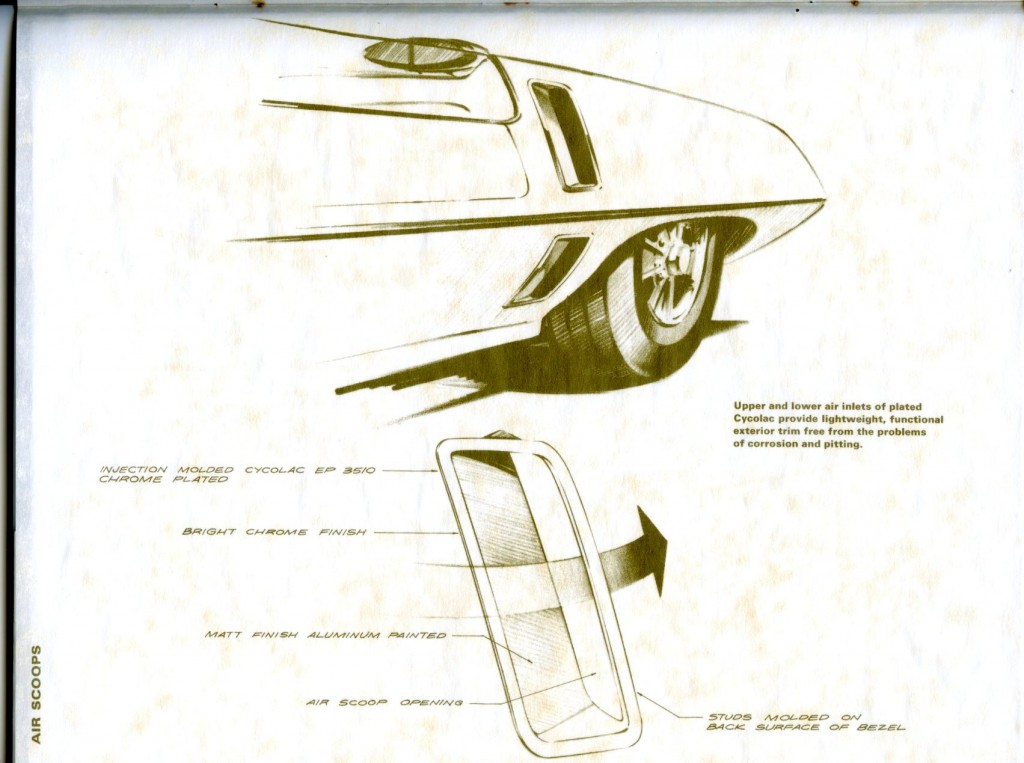
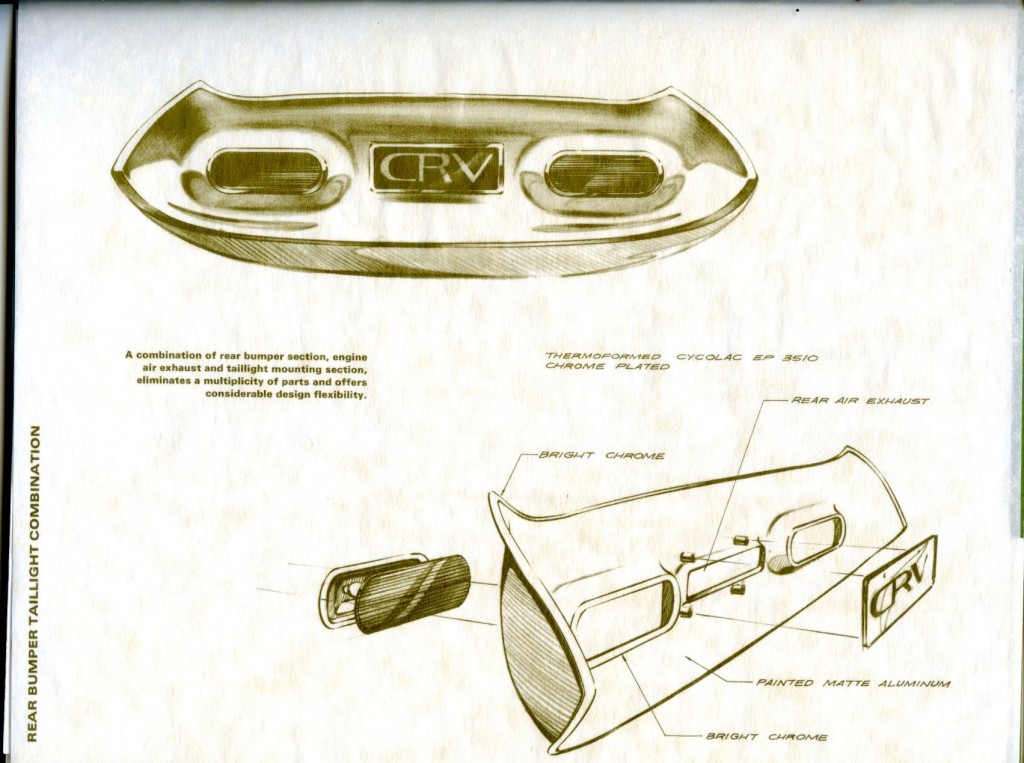
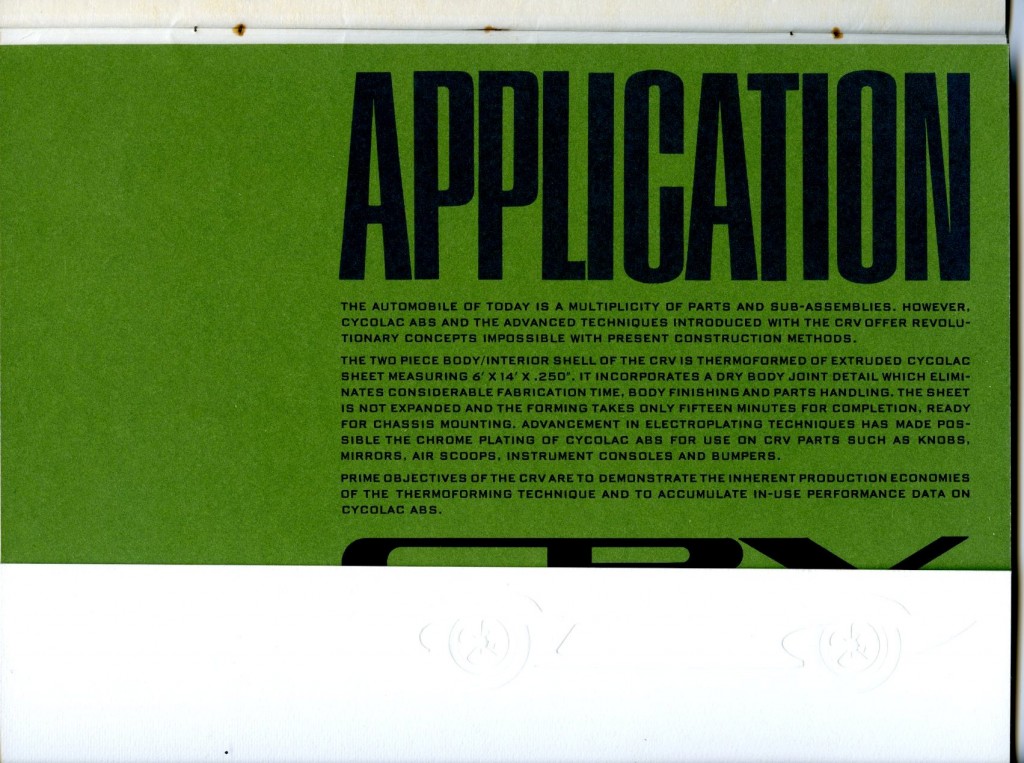
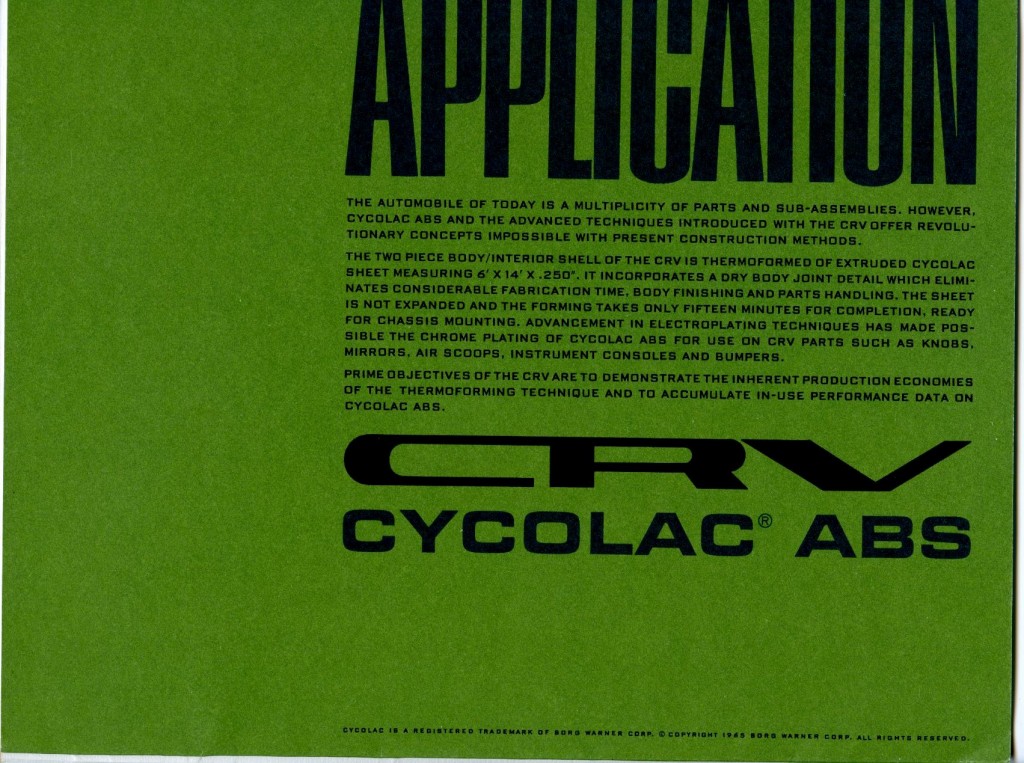
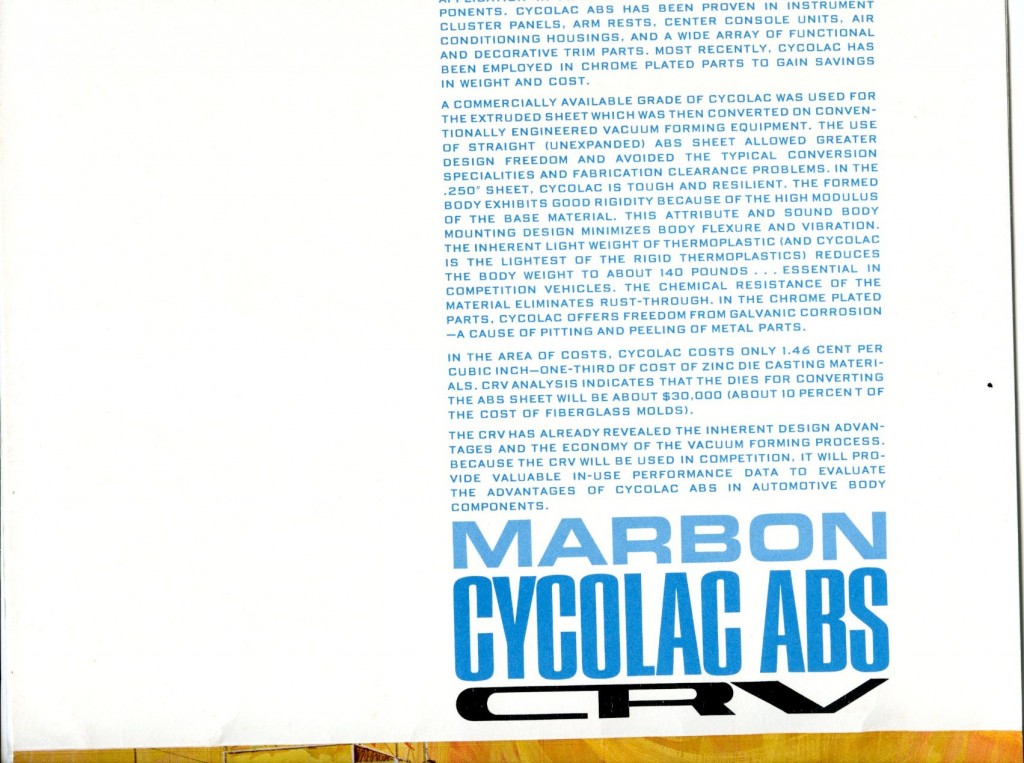
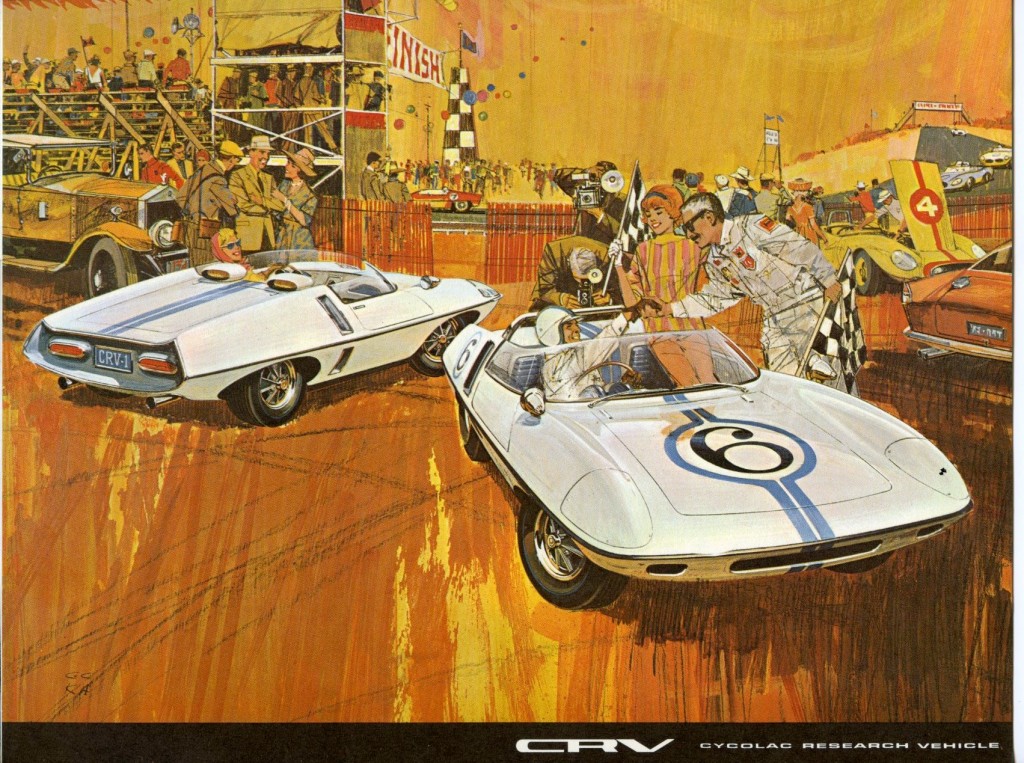
Hi Everyone;
Does anyone recall the 64-64 Mustang Fastback Show Car Styling Exercise by Marbon Chemicals. I saw same at the ASTME How at Cobo Hall, Detroit, MI and still have the beautiful, multi-page Marbon Brochure for that build. I have always wondered what happened to that car.
Joe Nagy.
A CRV was road raced in SCCA in 1965, driven in East Coast events by Forbes Howard who I believe was a Marbon employee. I have a coup[l of images taken at different tracks in my files.
I worked at Marbon Chemicals from 1958 until we got sold down the river to GE In late 80s.
Remember seeing about the car at the time. I believe they also built a race car of Cycolac.
It’s great to see that it is still around.
Washington, WV
I also worked at Marbon from 1961 to 1968. Those were great years for the first uses of ABS in automobiles. I recall an X-27 radio grill in a Cadillac as one of the first commercial applications.
Hi gang,
Does anyone know for sure who designed the body for the CRV? The factory press brochure lists William Schmidt Associates (Schmidt has a killer resume working for Ford and Packard, and penned the Lincoln Futura that became the Batmobile) as being responsible for body design and production. Other sources credit Dann Deaver at Centaur as having designed the body. It’s also possible they worked together on the project. Unfortunately both have passed on. It’s a great design, just wondered what the story was.
Harold Pace
Worked on CRV at Jentzen Miller Co and still have press pack. 313-590-3450. 585 Stephenson Hwy. Madison Heights Mi
Hi,
Good to hear from you. I have recently purchased a CRV and hope to get started restoring it soon. Would love to talk to you about the cars – will give you a call.
Best wishes,
Harold Pace
Hi
I worked for Marbon Div of Borg Warner from 1969 to about 72 as a designer. We had some interaction with the CRV. I’d like to talk to you about your project.
Thanks
I wonder if anyone would be interested in seeing a modern CRV in production? It is certainly a very interesting car and it seems a shame so few were produced. I agree with Rollie good design for what ever reason is enduring.
My Dad was a research technician at Borg-Warner’s R&D division in Des Plaines, IL, from the early 1960’s to 1972. When I was a teenager, he and I restored two 1957 Ford Skyliners and a 1956 Jag XK140. He always wanted a Lotus 7 kit as a father-son project, but didn’t have the funds. When B-W came up with this Cycolac beauty, I remember him trying like the dickens to finagle a body for us to build or adapt a chassis to. No luck. So we had to settle for the Man from U.N.C.L.E. car and Piranha dragster.
Superior design, like good taste, never goes out of style. When something is truly beautiful to behold, it will always be beautiful, and ‘most everyone will perceive it to be so. Concepts like scale, perspective, balance, even color and shape, all determine how we react to it. While there may be differences of opinion, differences of preference, even differences of excitement and enthusiasm for whatever it is, in the end, a thing of beauty is appreciated and acknowledged by almost everyone and is truly, as Keats said, a joy forever. It is timeless.
The difficulty for most of us, is how we identify or describe it. For some it is the classic “form follows function” argument…i.e. a rational approach as to why it is what it is. For others, it is as abstract as “I don’t know what it is about it, I just know I like it”.
Kind of reminds me of the appeal and the beauty of fast motorcycles: The visceral thrill of hanging it out with a nearly out of controll vehicle, versus the cerebral joy of maintaining complete controll of a basically unstable machine that can hurt you if you don’t get it right. Both are highly satisfying experiences that are very enjoyable and yet very different.
The car is still breathtaking after all these years, the sheer fact that something this advanced could have been tried in the 60’s, is amazing in itself. Keep the info coming… too fine for words. Form and function and engineering are in complete alignment. Another idea and design very ahead of its time… perhaps technology and time are finally aligned. Would be interesting to see what your readers think.